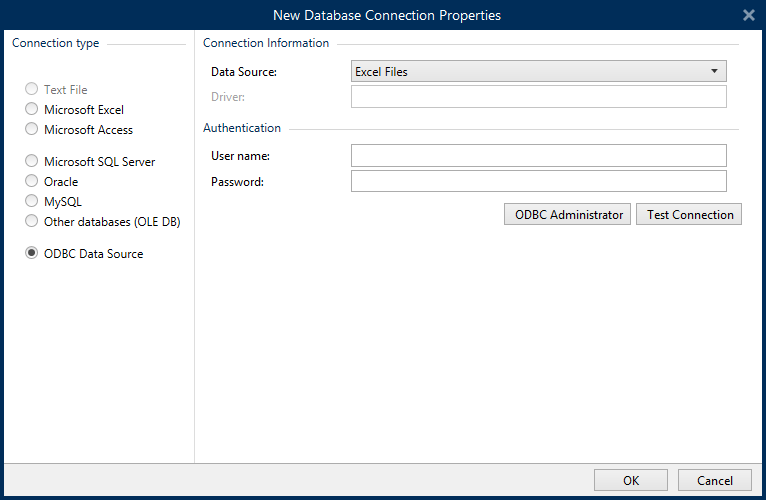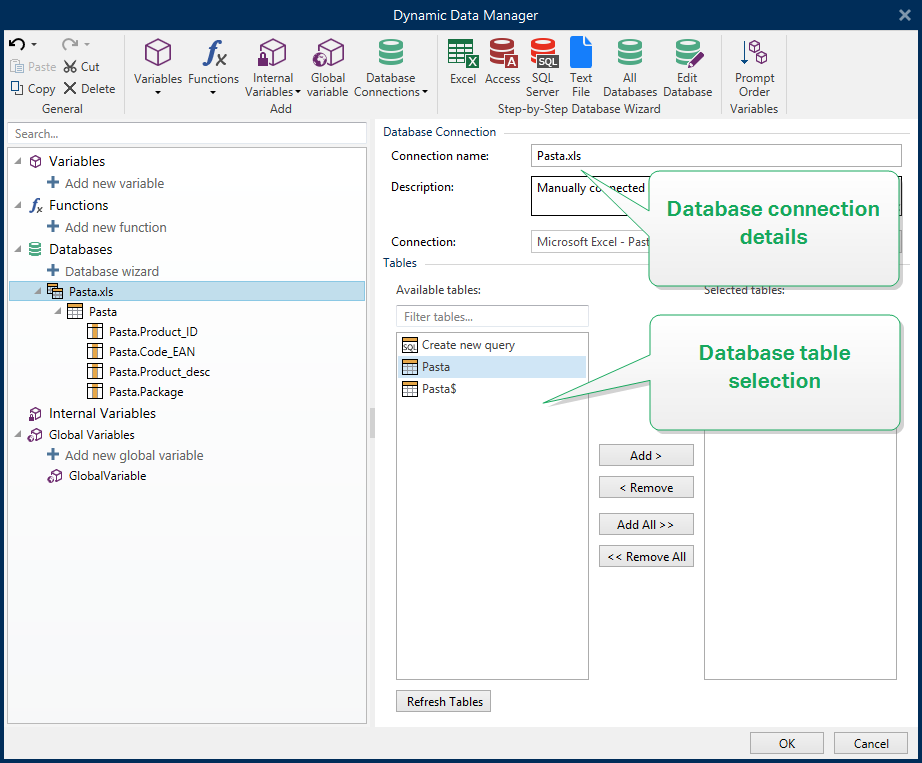Connect to ODBC Data Source
Various databases can be connected to Label Objects
Click Database Connections button in the Dynamic Data Manager Ribbon and select ODBC Data Source as the preferred database type. New database connection properties window opens.
To manually connect an object to a database, using the ODBC, complete the following steps:
Step 1: Connection Setup
Connection Information group defines database details.
Data Source defines the source to retrieve the data from.
Driver displays the database driver according to the selected data source.
Authentication group includes a user name and password fields for the ODBC connection. User authentication is necessary in certain cases – e.g. if SQL authentication is required when connecting to an SQL server.
User name: enter the correct user name to access the ODBC database.
Password: enter the correct password to access the ODBC database.
ODBC Administrator button opens the system ODBC administration dialog. Read more details about the dialog here.
Test Connection button starts a connection testing procedure. It checks if Desktop Designer can successfully connect to the database.

Click OK. Database properties window appears.
Database Connection group defines the connection name and describes it.
Connection name: defines the name for the connected database file. By default, it displays the filename of the connected file. Insert a new name to make it easy to be found in the Desktop DesignerDynamic Data Explorer.
Description: allows adding additional information and suggestions for the connected database.
Connection: identifies the currently connected database file. To replace the currently connected file, click the Connection Setup button. New Database Connection Properties window reappears – repeat step 1 to connect to an alternative database file.

Step 2: Database Table Selection
Tables group allows you to select which tables of the connected database should be used as a data source.
Available tables: available tables in the selected database.
Selected tables: tables that are used as a data source.
Click Add > or < Remove buttons to add or remove the tables from the Selected fields.
Note
When editing an existing database, a table cannot be removed if used in a script, function, action, or connected to a label
Click OK when done.
Step 3: Configuration of Database Tables and Fields
Read about how to configure the connected table Database Table Configuration
Read about how to configure the database fields Database Field Configuration
Click OK when done.